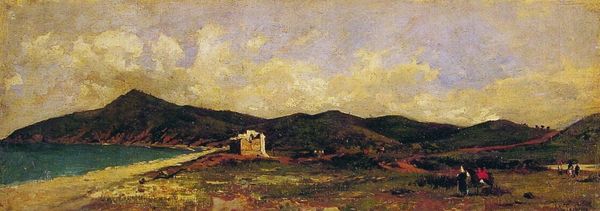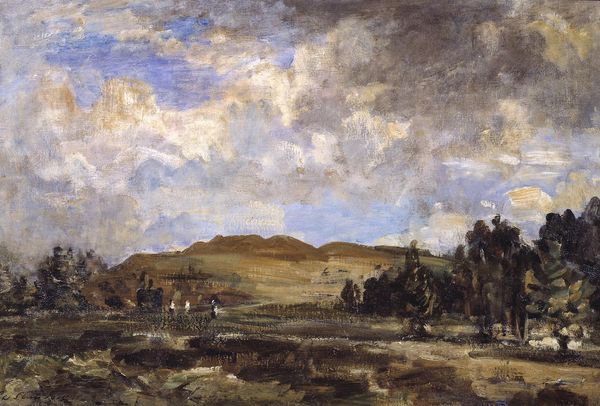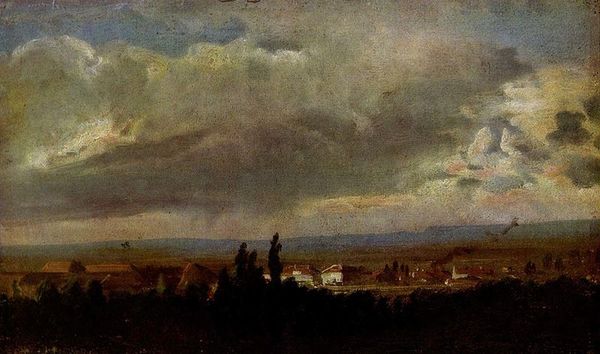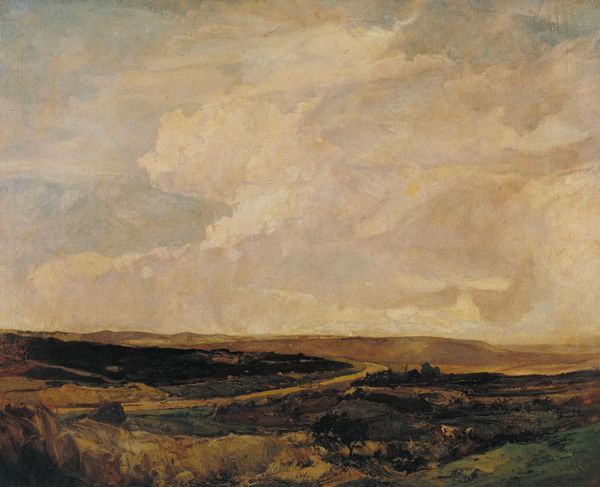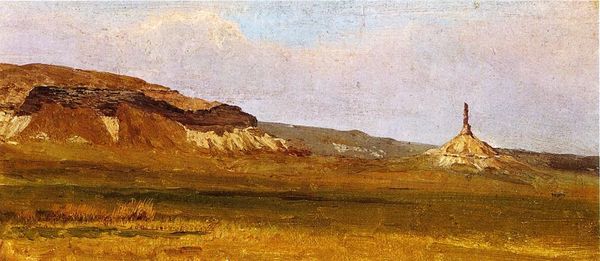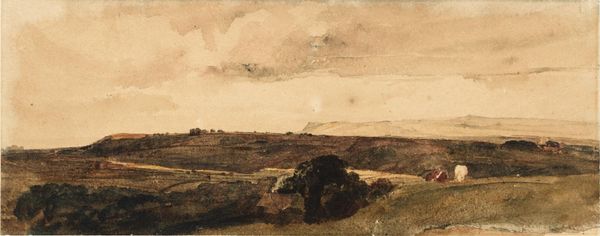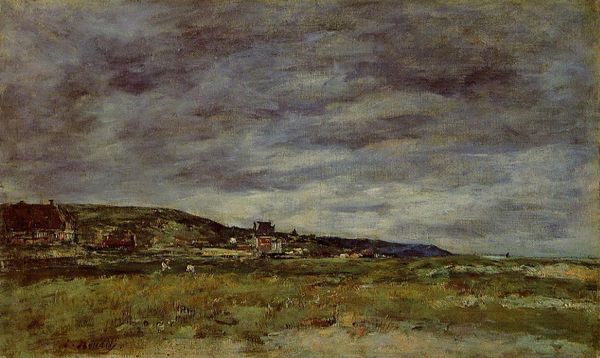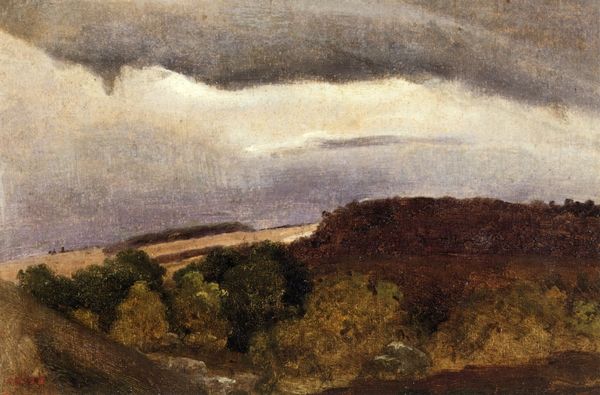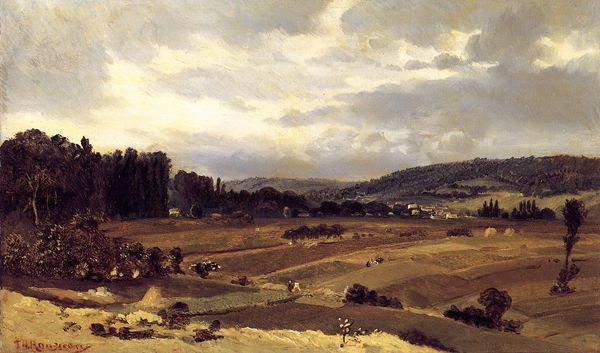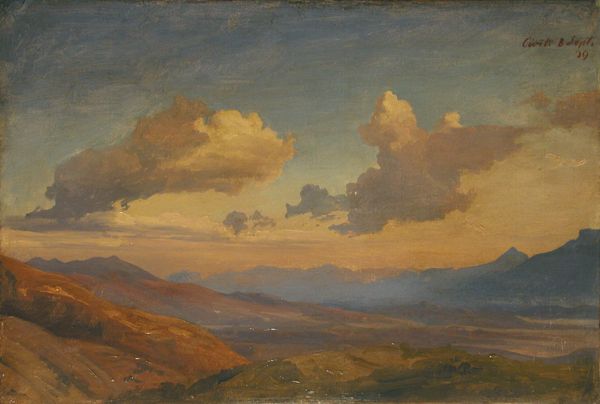
A Windmill at Montmartre 1845
0:00
0:00
jeanbaptistecamillecorot
Fitzwilliam Museum (University of Cambridge), Cambridge, UK
Dimensions: 26 x 34 cm
Copyright: Public domain
Editor: This is Camille Corot's "A Windmill at Montmartre," painted around 1845. It's an oil painting, and there's a palpable sense of stillness despite the stormy sky. The windmill itself seems secondary to the vastness of the landscape. How do you interpret this work, especially considering its historical context? Curator: The windmill, yes, initially seems merely representational. But consider windmills; historically, they signify progress, human ingenuity harnessing nature. However, they're also symbols of cyclical change – the turning of seasons, the turning of fortune. Given the stormy skies you noted, and that Corot painted this near Paris, we must recognize that Parisian life underwent vast, sometimes violent, changes during this period. Editor: So, the windmill could represent a fleeting moment of calm before a storm, both literally and metaphorically? Curator: Precisely. Think about what windmills also represent to a burgeoning urban center - rustic tradition or technology replacing agricultural spaces. Look how small the artist makes the details! Corot reduces it to a sketch amidst a grand landscape, inviting us to contemplate transience and permanence, human efforts against the enduring power of nature and the relentless march of time. And that sky…what does it suggest to you about what Paris may have felt like at the time? Editor: A sense of unease or foreboding, definitely. So it's not just a pretty landscape, but a commentary on a society in flux. Curator: Exactly! Visual symbols encode our cultural memory and psychological relationship with the world around us. Corot captures a moment where old and new worlds collide. We, standing here centuries later, now get to look and see ourselves through these echoes. Editor: I see it now! Thanks for helping me unravel the layers of symbolism embedded within this seemingly simple landscape. Curator: It’s a reminder that even landscapes carry stories far beyond their immediate visual appeal.
Comments
No comments
Be the first to comment and join the conversation on the ultimate creative platform.
